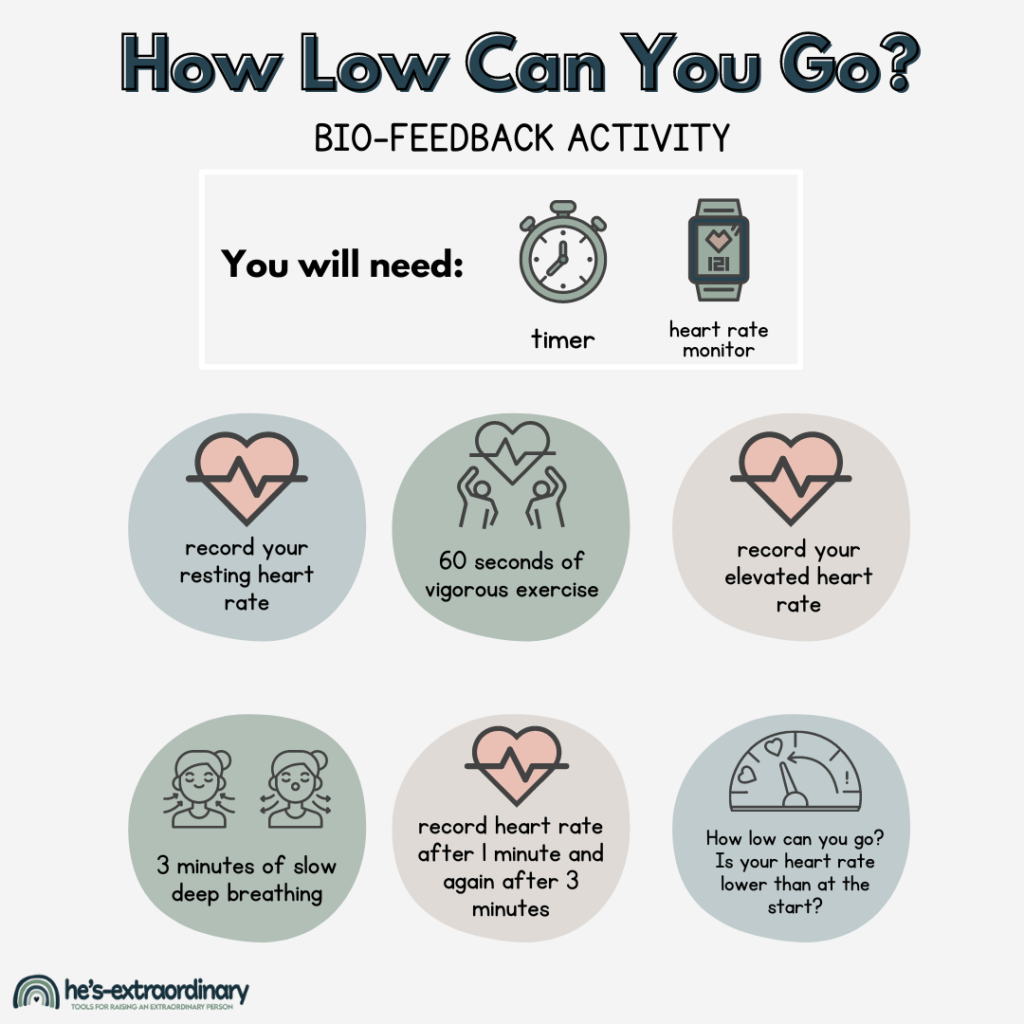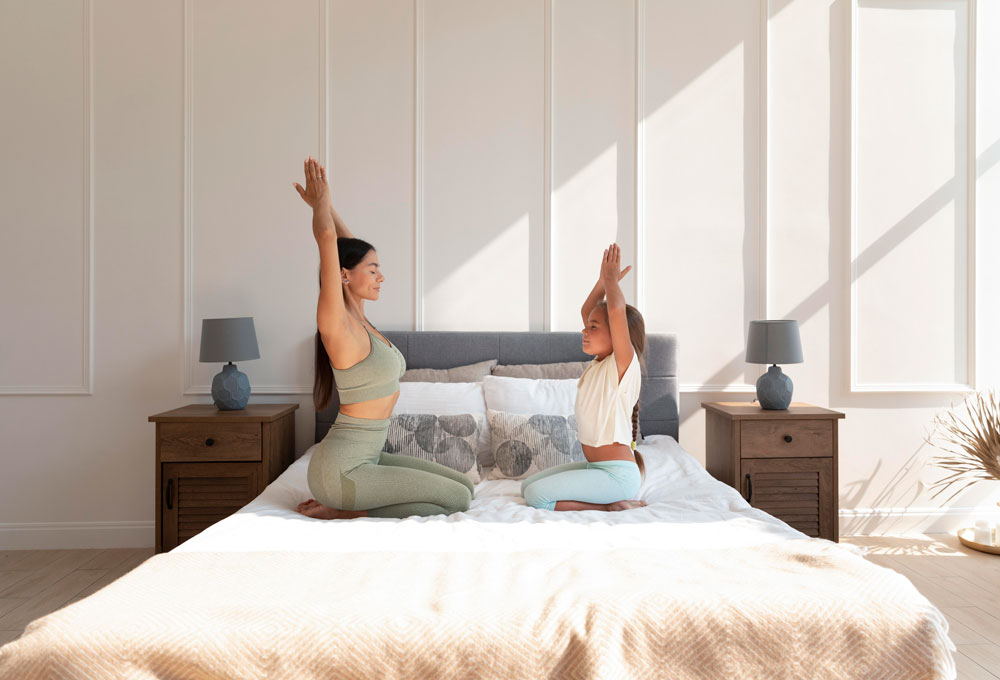17 Simple and Fun Relaxation Techniques for Kids
What’s inside this article: How to teach relaxation strategies to your child, show them the importance of relaxation, and 17 simple and fun relaxation techniques to try using together.
**Also includes printable resources to help you.**
Disclaimer: This post contains affiliate links.
Relaxation practices are activities that activate the body’s relaxation response. This natural response is the counter-part to our fight or flight instinct, and it brings on slower breathing, lower blood pressure, and a reduced heart rate.
Relaxation techniques can help children of all ages achieve emotional regulation, cope with anxiety, and minimize meltdowns so long as they’re adapted to be age-appropriate.
It would be unrealistic to expect your toddler to participate in a 30-minute meditation. Still, a one-minute deep-breathing activity could introduce relaxation techniques and hold their interest.
On the other hand, a teenager can likely spend more time focusing on a single strategy.
It’s essential to keep your child’s interests and abilities in mind because relaxation techniques should be enjoyable. Otherwise, their purpose is defeated.
Continue reading to learn more about teaching relaxation techniques to your child and which methods to try. You’ll find digital downloads/printables throughout the article to help you.
Show Your Child Why Relaxation Is Important
Relaxation is important for children for many reasons. It has emotional, physical, social, behavioral, and cognitive benefits. That’s why knowing several effective strategies to help relax is so important.
Some of the benefits of relaxation include:
- Reduces anxiety and stress
- Improves mood
- Improves emotional regulation
- Better memory and concentrations
- Boosts creativity
- Better sleep
- Overall improvements in physical health
- Improves emotional understanding
- Builds patience and resilience
- Reduces behavior challenges
The list of benefits is quite astounding. So, teaching your child the importance of relaxation and how relaxation techniques can help them is an important first step before introducing any specific activities to them.
Kids can be reluctant when trying new things and may not perceive the benefits.
Here are a couple of resources you can use to help kids see the importance of relaxation.
Teach Them About The Fight-or-Flight Instinct
Since activating the body’s natural relaxation response is essentially the antidote to the fight or flight instinct, start by helping them better understand how their bodies react to stress.
This stress response is the culprit behind your child’s tantrums, meltdowns, outbursts, and shutdowns.
This free illustrated narrative makes it easier for children to understand how their brain works and why this happens.
Your Brain: Explaining Fight or Flight to KidsShow Them How Relaxation Techniques Combat Stress
Once your child knows what fight-or-flight is, you can use this easy 5-minute bio-feedback activity to show them how relaxation techniques can trigger the body’s relaxation response, helping them calm down.
Bio-feedback is a great educational tool for children when teaching self-regulation because it helps them visualize how their bodies are responding to their environment and their actions. This activity shows kids how deep breathing slows their heart rate, helping them feel calm and relaxed.
It’s important to do this activity when your child is calm. This won’t work if you try to show them when they’re already upset.

Tip: You can also use this same activity to see how different relaxation techniques help calm down the body. Different strategies will be more effective than others, and some may work more quickly than others.
This can also help your child choose their favorite relaxation techniques.
Relaxation Techniques for Kids
Here are some relaxation techniques for kids. Remember to have age-appropriate expectations, keep it fun and short, and practice at times when your child is calm and ready to engage.
1. Progressive Muscle Relaxation
In progressive muscle relaxation, you tense a group of muscles as you breathe in, then relax them as you breathe out.
You work through your muscles in a specific order, often starting with your toes and working your way up.
Progressive muscle relaxation is most successful for kids when you read aloud a script and participate with them. Kids usually enjoy it when you tense and relax your facial muscles, making silly faces, and this usually leads to ending the activity by laughing and feeling positive.
Here is an example. You can also download and print a free progressive muscle relaxation script below.
u003cstrongu003eEasy Progressive Muscle Relaxation for Kidsu003c/strongu003e
Get Comfortable
First, choose a comfortable position. You can lie down or sit. When you’re ready, close your eyes and be very quiet.
Toes
Curl your toes as tightly as you can and hold for 5 seconds. Relax
Feet
Bend your ankles upward, pointing your feet towards your body, and hold for 5 seconds. Relax
Thighs
Squeeze your thigh muscles by pressing your legs together as tightly as you can. Imagine you are holding something between your legs and don’t want it to fall. Hold for 5 seconds. Relax
Hips and Buttocks
Tighten your hips and buttocks. Can you lift yourself up higher in your seat? Hold for 5 seconds, then relax.
Stomach
Squeeze your stomach muscles and hold for 5 seconds, then release.
Back
If you’re lying down, arch your back off the ground. If you’re sitting, arch your back backward and hold for 5 seconds. Relax.
Shoulders
Shrug your shoulders up to your ears and squeeze for 5 seconds. Relax.
Arms
Bend your arms and squeeze your biceps like you’re pinching something in your elbow between your forearm and bicep. Hold for 5 and release.
Hands
Extend your arms out straight and squeeze your fists tightly for 5 seconds. Relax.
Mouth and Jaw
Open your mouth as wide as you can and hold it open for 5 seconds. Relax.
Eyes
Squeeze your eyes shut as tight as you can and hold for 5 seconds. Relax
Forehead
Raise your eyebrows as high as they go. Hold for 5 seconds, then release.
Whole Body
Now squeeze your entire body as hard as you can and hold it for 5 seconds. Relax
Assess How You Feel
Do any parts of your body feel tight or tense? If they do, squeeze and release those muscles a couple more times. u003cstrongu003eThen, you’re done!u003c/strongu003e
Note: Some kids don’t notice much of a difference the first time they try progressive muscle relaxation. But over time, they gain better control over their muscles and are able to tighten and release more effectively, and their relaxation increases.
Progressive Muscle Relaxation2. Deep Breathing Exercises
Deep breathing is a highly effective relaxation technique for kids when done correctly.
However, kids will often breathe out really hard or go too fast, not engaging their diaphragm, etc. causing this technique to be ineffective.
Of course, practice makes perfect; and practicing deep breathing exercises daily with your kids will help them become experts.
However, you can also use visual guides that your child can follow to encourage them to use the proper technique.
The correct way to practice deep breathing:
- Inhale slowly through your nose until you can’t take in any more air
- Your stomach should expand; if you’re lying down, place your hand on your belly so you can feel it rising.
- Then, exhale slowly and completely through your mouth. Make sure you gently exhale, like you would if you were blowing on hot food.
Find more tips on teaching deep breathing exercises to kids here.
3. Yoga
Luckily, you don’t have to be highly flexible, or a yoga expert, to use yoga as a relaxation technique. You can practice at home, making it highly accessible, and there are fun yoga activities available online created just for kids and tailored to their interests.
Yoga also helps kids practice their deep breathing and mindfulness while hopefully having fun, improving flexibility and strength.
Cosmic Kids Yoga is my all-time favorite yoga channel for kids. There are so many fun videos on YouTube that you and your children can follow along with at home.
Kids Yoga Pose Cards4. Deep Pressure/Weighted Items
Deep pressure and items such as weighted blankets stimulate the proprioceptive system in kids. If your child has sensory processing differences, having this sense understimulated can be extremely dysregulating.
You can provide your child with deep pressure by firmly holding, stroking, cuddling, hugging, massaging, or squeezing. They may also like various massaging tools, such as a handheld massager or a dense foam roller.
Weighted items can have the same benefits; you can read about weighted blankets for kids here.
5. Coloring
Research shows coloring has the ability to trigger the brain’s relaxation response as well. It induces the same mental state as meditating by reducing the thoughts of a restless mind.
This naturally generates mindfulness and quietness in children, which allows them to relax. By the way, it works for adults, too!
Coloring is also a non-verbal sensory activity and can provide kids with an outlet to express their emotions and perceptions that they aren’t able to verbalize.
You can find so many different coloring books for kids, that there’s sure to be something that matches your child’s interests.
6. 5-4-3-2-1 Grounding
This very simple relaxation strategy helps ground you and you can use it nearly anywhere. The steps to 5-4-3-2-1 grounding are really straightforward:
Look around and identify:
- 5 things you can see
- 4 things you can touch
- 3 things you can hear
- 2 things you can smell
- 1 thing you can taste
You can download this free printable poster to use with your child when practicing this relaxation technique.
5-4-3-2-1 Grounding Printable Poster7. Guided Meditation
Guided meditations are another great way to help kids relax.
They often incorporate various relaxation techniques, including deep breathing and visualization, while emphasizing positive emotions and sensations. Guided meditations teach kids to be present in the moment and they also reduce stress and improve emotional awareness.
You can find different themed guided meditations for kids here.
Other Relaxation Techniques for Kids
There are many different relaxation techniques out there you can teach your kids. Remember, there’s no one size fits all, so what works for some children may not work for yours. The key to success is finding relaxation techniques that your child enjoys. It’ll help them with emotional self-regulation while also minimizing the frequency or intensity of meltdowns and outbursts.
Some additional relaxation techniques for kids to try include:
- Mindfulness
- Music therapy – check out 8D audio tracks using headphones
- Art therapy – like this glitter jar
- Aromatherapy
- Guided imagery/visualization
- Nature walks
- STEM Projects
- Hydrotherapy – as simple as taking a warm bubble bath
- Brain Breaks
- Sensory Play
Whatever you choose, remember to keep it fun and practice these techniques when your child is calm and engaged.
Participating in activities with them and modeling the right strategies when they’re calm can help them learn to use these strategies successfully when they need them.


